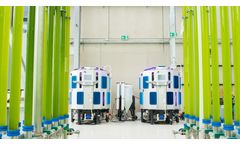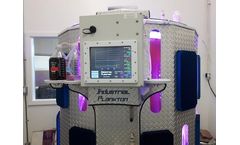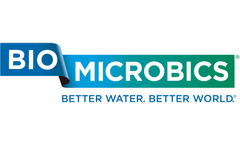Bioreactor Articles & Analysis
25 articles found
Two full size BioReactors are composting 2 waste streams at a Brazilian chicken processing integrated processing plant The 3rd smaller BioReactor is processing other waste streams on a trial basis. ...
This 5’ x 10’ (1.5m x 3m) BioReactor Composting System is built into a 40’ (12m) customized container. ...
For better moisture and odor control, this composter has duct work exhausting air out of the vessel through the discharge end of the composter. If need be, the exhausted air / duct work could be direct to a biofilter. ...
In China, a 3m x 12m (10’ x 40’) BioReactor is composting chicken manure. The manure is retained in the composting system for 5 days. ...
These 3 BioReactors are part of a comprehensive solid organic processing facility in Goa, India. The BioReactor Composting System by XACT Systems Inc. handles all the composting portion of the waste management treatment. ...
A 10’ x 60’ (3m x 18m) BioReactor was installed 2009 at a 1700 cow dairy farm. The BioReactor is composting dewatered dairy manure. ...
The results are extremely detrimental, shaving off both the longevity and daily yields of the large-scale culture.Enter Industrial Plankton’s Photobioreactors (PBRs) Our bioreactors, complete with automated control of vital parameters, are optimized for producing a reliable and biosecure inoculum for massive systems. ...
Rhodomonas is a very sensitive algae, but it grows well in our bioreactors under proper conditions. The successful cultivation of Rhodomonas in bioreactors requires attention to several key factors to ensure consistent and reliable growth: Temperature Rhodomonas algae prefer specific temperature ranges for optimal growth. Our bioreactor has ...
How Are Bioreactors Used In The Food and Beverage Industry?Bioreactors offer a wide array of benefits in food and beverage production. ...
Synopsis: When Sustainable architecture is your goal, what choices do you have for water efficiency? Application: The BioBarrier® is the first blackwater/Graywater treatment system certified for water reuse. ...
Our Phyco-Flow tubular photo-bioreactor will be used to cultivate microalgae species for the production of synthetic phyto-hormones and other key compounds. ...
The use of an avian suspension cell line allows to quickly scale-up in single use bioreactors at a large volume (> 500L). Due to the fact that media formulations for both suspension and anchorage–dependent Nuvonis avian cell lines are animal component free, this can result in production costs’ reduction and a simplified regulatory submission process. ...
ByNuvonis
How to de-risk the scale-up process? We’ve all been there as a researcher or biotech professional. The strain of algae culture or microbes we are growing in our lab is thriving. It seems so straightforward and simple to culture, we believe we have it figured out. We easily create replicates in the lab at bench scale. We are now ready for the true test: scale-up time! Will this results we ...
Algae bioreactors (PBR) Features – Easy algae cultivation Traditional algal culture techniques are unreliable and labour & space-intensive. ...
What are open and closed algae culture systems? The two broadest methods of culturing algae at medium to large scale are split into two styles of system: open and closed photobioreactors (PBRs). A PBR is any device or system that supports the culture of photosynthetic organisms using light. There are photobioreactor advantages and disadvantages to both types systems depending on the goals you ...
Cell retention/media perfusion devices increase the viable cell density of bioreactors and can be used to reduce the number or volume of seeding stages of the production bioreactor (1,2,3). ...
Woodchip bioreactors and the Tailwater Nitrate Removal System rely on bacteria to reduce nitrate (NO3) to nitrogen gas and carbon dioxide. ...
The challenges of salinity and rich nitrogen content were met with Fluence aerobic biological denitrification with a membrane bioreactor (MBR), followed by reverse osmosis (RO) ultrafiltration for demineralization. ...
After mixing, the wastewater is subjected to an aerobic treatment, including a nitrification-denitrification process with a membrane bioreactor (MBR). Ultrafiltration membranes eliminate suspended solids, allowing for demineralization by reverse osmosis. ...
Pinnacle Environmental Technologies Inc. solved the treatment levels problem on day one by utilizing the BioBarriei* Membrane BioReactors by Bio-Microbics Inc. inside on-deck and/or floating tanks. ...












